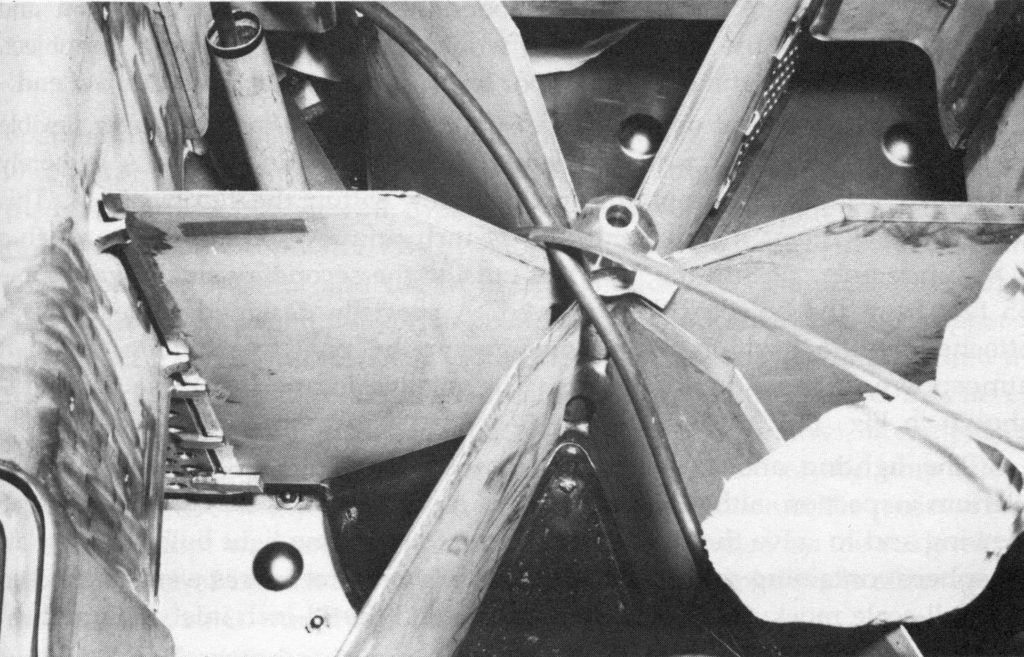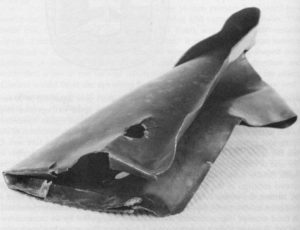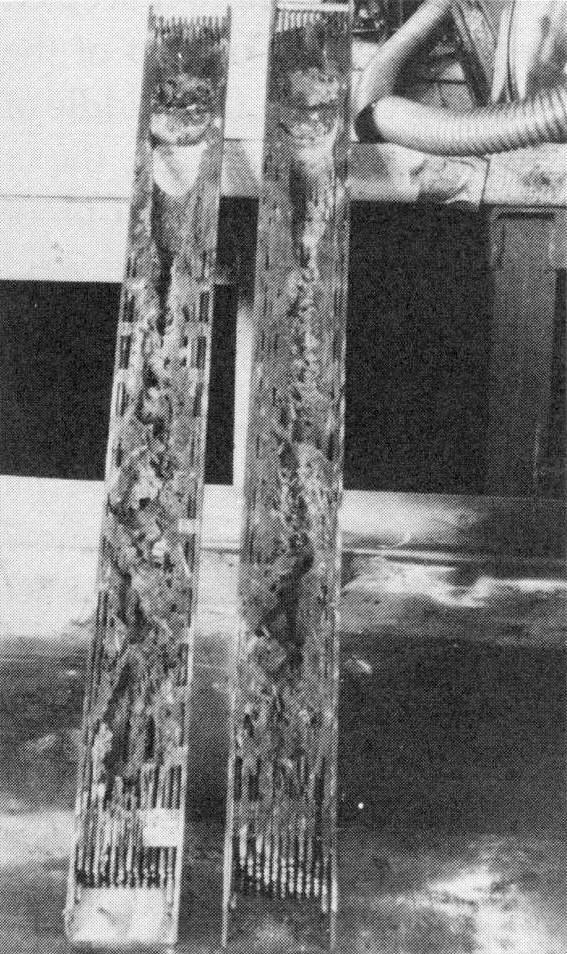Fission Stories #152
The Enrico Fermi Nuclear Power Plant near Newport, Michigan featured a sodium-cooled fast reactor.
Unlike today’s nuclear power reactors that use water both to cool the reactor core and slow down, or moderate, neutrons emitted by splitting atoms, it used liquid sodium to cool the reactor. Heated sodium left the reactor vessel and flowed through tubes within heat exchangers. Heat conducted through the metal tube walls warmed liquid sodium outside the tubes. This warmed sodium was piped to another heat exchanger while the sodium exiting the tubes was routed back into the reactor vessel. Inside the secondary heat exchangers, heat conducted through tube walls from the sodium boiled water. The steam went to a turbine/generator to make electricity.
Liquid sodium entered the bottom of the reactor vessel and was turned upward to flow through the reactor core.
A conical flow guide had been installed to help re-direct the sodium flow from horizontal to vertical. Figure 3 looks down at the core inlet plenum and shows the conical flow guide.
The conical flow guide was made from stainless steel. Toward the end of the plant’s construction, liner plates made of zirconium were added to the conical flow guide. These zirconium liners were installed as a safety upgrade for protection in case all sodium cooling flow through the reactor core stopped. This postulated loss of coolant flow would lead to meltdown of the reactor core. Molten pieces of the core would fall down into the core inlet plenum. The zirconium liners had a higher melting point than stainless steel and thus were intended to spread out a molten mass to aid in its eventual cooling.
Two segments of the zirconium liner broke free from the conical flow guide. They had been screwed in place. It was theorized afterward that pressure from the sodium flow broke the segments away from the screws holding them in place.
The freed segments were carried upward by the sodium. One segment apparently lodged in outer edge of the reactor core support structure. The other segment wound up against the bottom side of the reactor core. During reactor operation in June 1966, workers noticed that the temperature of the sodium exiting some fuel assemblies was 20 to 25 percent higher than expected. During reactor operation in August 1966, the sodium temperatures exiting some fuel assemblies were 40 to 47 percent higher than the rest of the temperatures. The reactor was shut down and fuel assemblies swapped around within the reactor core in an attempt to make the temperatures more uniform across the core.
On October 5, 1966, the operators increased the reactor power level to 50 percent—the highest level obtained thus far since the reactor began operating in 1963. That power level coupled with the nearly complete blockage of cooling flow caused two fuel assemblies to overheat and partially melt down. Nearly 40 percent of one fuel assembly melted while about 25 percent of the second assembly melted (Fig. 5).
Calculations and laboratory experiments performed after the event indicated that the zirconium liner blocked about 97 percent of the coolant flow through these two fuel assemblies.
Our Takeaway
Material added to the reactor to protect against a reactor core meltdown from a “complete loss of coolant flow” accident instead blocked coolant flow and caused a partial core meltdown.
Workers cleaned up the partial meltdown and restarted the reactor several years later.
The missing zirconium liners were not replaced on the conical flow guide because it was later determined that the complete loss of coolant flow was impossible. Ironically, the zirconium liners that were not necessary to mitigate a reactor core meltdown blocked enough coolant flow to cause a partial meltdown.
While the zirconium liner was the culprit in this meltdown, it had accomplices.
In June and August 1966, workers detected abnormally high sodium temperatures at the outlet of some fuel assemblies. Not a degree or two above average, but up to nearly 50 percent higher than the outlet temperatures from other fuel assemblies.
Was this anomaly studied to find its cause?
Yes, but only after two fuel assemblies overheated and partially melted.
Until then, workers rearranged deck chairs on the Titanic—they shuffled fuel assemblies within the reactor core to see if that might fix the problem. “Trial and error” and “nuclear safety” were not compatible in 1966 and remain incompatible today.
The level of effort undertaken after the reactor core partially melted in October 1966 could have and should have been undertaken after the abnormally high fuel temperatures were encountered that summer. Such efforts could have prevented the ensuing meltdown.
Unusually high temperatures indicated a problem. A child running a high fever is not responsibly advised to roll over or swap beds with a sibling with the hope the temperature will decline. Likewise, a reactor running a fever cannot be responsibly treated by shuffling fuel assemblies about and hoping for a miracle cure.
Unfortunately, U.S. nuclear power history suggests that early warnings of pending disaster are too often ignored. For example, these Fission Stories describe events where clear and abundant signs of intolerable conditions were, in fact, tolerated:
Fission Stories #7, 11, 16, 18, 29, 80, 88, 90, 94, 106, 121, 126, 134, 137
That these warning signs that were downplayed or dismissed did not lead to larger consequences is fortunate. But luck makes a lousy barrier and must be factored out of the nuclear safety picture as much as possible.
“Fission Stories” is a weekly feature by Dave Lochbaum. For more information on nuclear power safety, see the nuclear safety section of UCS’s website and our interactive map, the Nuclear Power Information Tracker.





